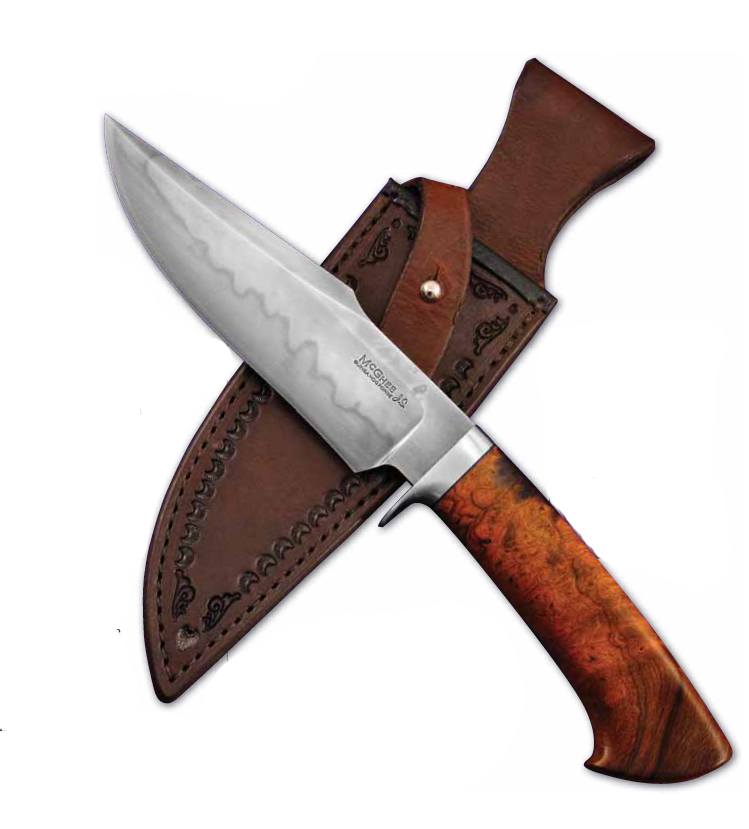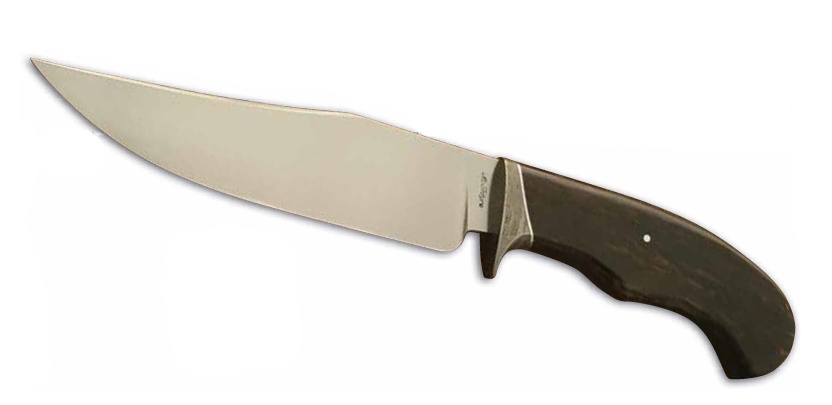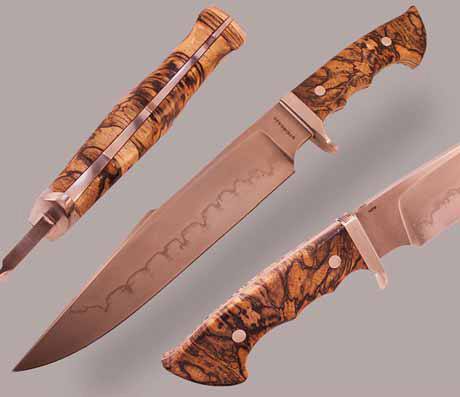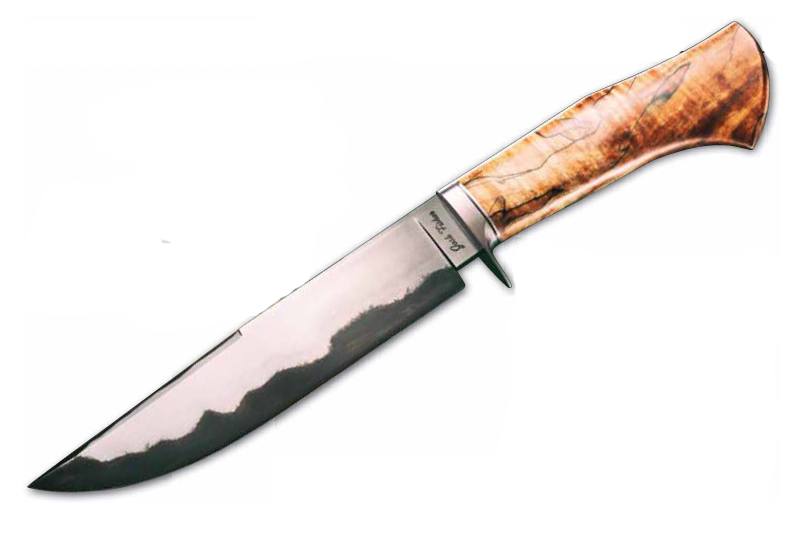
What are the characteristics of a camp knife?
- Design suitable to clearing vegetation, preparing meals and handling general camp chores
- Fixed blade
- Blade length: 6 to 10 inches
- Full tang
- Guard
- Jimping
- Pommel
Camp knife: the name conjures images of unlimited locations and scenarios. Most would agree that a camp knife would be some type of fixed blade suitable for odd jobs while camping and meal preparation. Here are some specifics to round out that general definition.

Blade Length
Camp knives can start at a 5-inch blade but usually range between 6 to 10 inches. How much blade length you need often will depend on your campsite. If in an established hunting or fishing camp, a 6-to-8- inch blade probably will be all you need.
Longer blades would be necessary if you were making a campsite that was a short-term proposition. Areas may need to be cleared of thin vegetation for sleep areas or your tent. You may need to widen the trail or even break trail to get to your preferred hunting or fishing location.
Tang Size

The tang’s size often is used to off set the blade’s size, giving the knife better balance. Construction should feature a full tang—that is, the tang goes all the way to the end of the handle. Tangs can be hidden or exposed.
Guards

While there are many camp knives without guards, I prefer one with a guard, and I like it to be of stainless steel. Whether it’s a single or double guard depends on the knife and its intended purpose. Most camp knives should have at least a single guard.
Jimping
Thumb serrations (jimping) on top and in front of the guard should be considered as they give you better knife control.
Pommel
Some prefer some type of pommel on the end of the handle for hammering. While in the Army I found using an “infantry hammer”—a rock—allows you to hit harder and what you aim at. It also accomplishes the task quicker and eliminates the potential for knife damage.
Handles
Handles are often overlooked on knives. If you have ever used a knife for an extended period of time and the handle was too thin or too wet environment, I recommend a material to allow your hand to mesh with the handle.
Natural materials are often used for handles. With its hills and valleys, stag is an excellent choice. The problem with natural materials is they can shrink and/or crack over time, giving your knife an uneven grip, limiting its utility.
Synthetic materials such as rubber, G-10 or Micarta® can be excellent choices. Rubber will deteriorate over time unless properly maintained. This is especially true in a saltwater environment. When choosing a synthetic handle material, it is best to pick one with some kind of grip to it. Rag Micarta can be an excellent choice.
Incorporating some kind of stippling of the Micarta or G-10 enhances grip. One last thing: Give some thought to using orange G-10. If you drop your knife in the woods, the color gives you a fighting chance to actually find it.
 NEXT STEP: Download Your Free KNIFE GUIDE Issue of BLADE Magazine
NEXT STEP: Download Your Free KNIFE GUIDE Issue of BLADE Magazine
BLADE’s annual Knife Guide Issue features the newest knives and sharpeners, plus knife and axe reviews, knife sheaths, kit knives and a Knife Industry Directory.Get your FREE digital PDF instant download of the annual Knife Guide. No, really! We will email it to you right now when you subscribe to the BLADE email newsletter.






